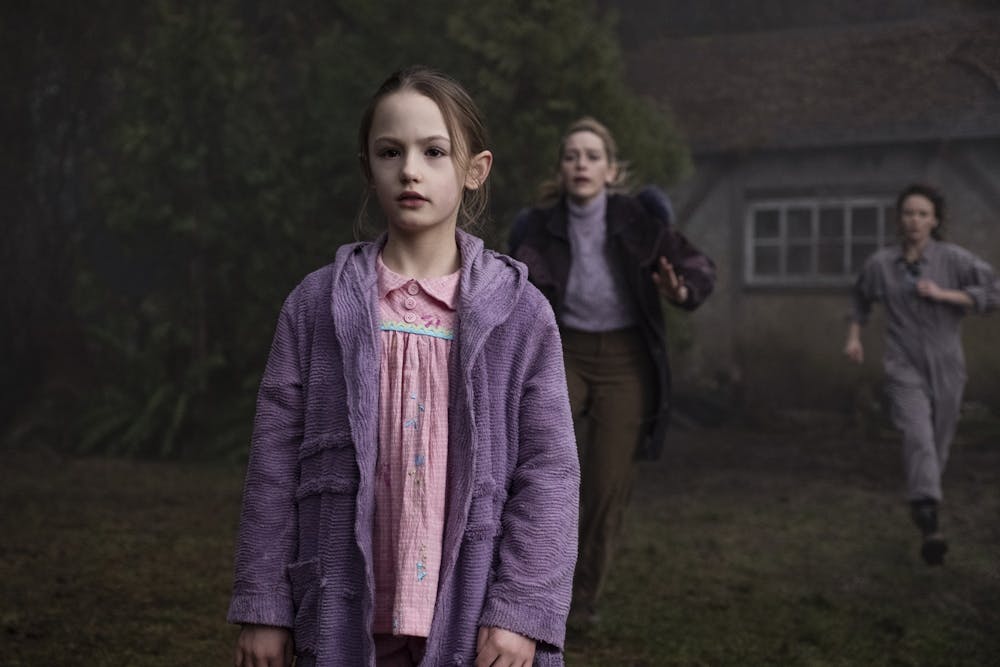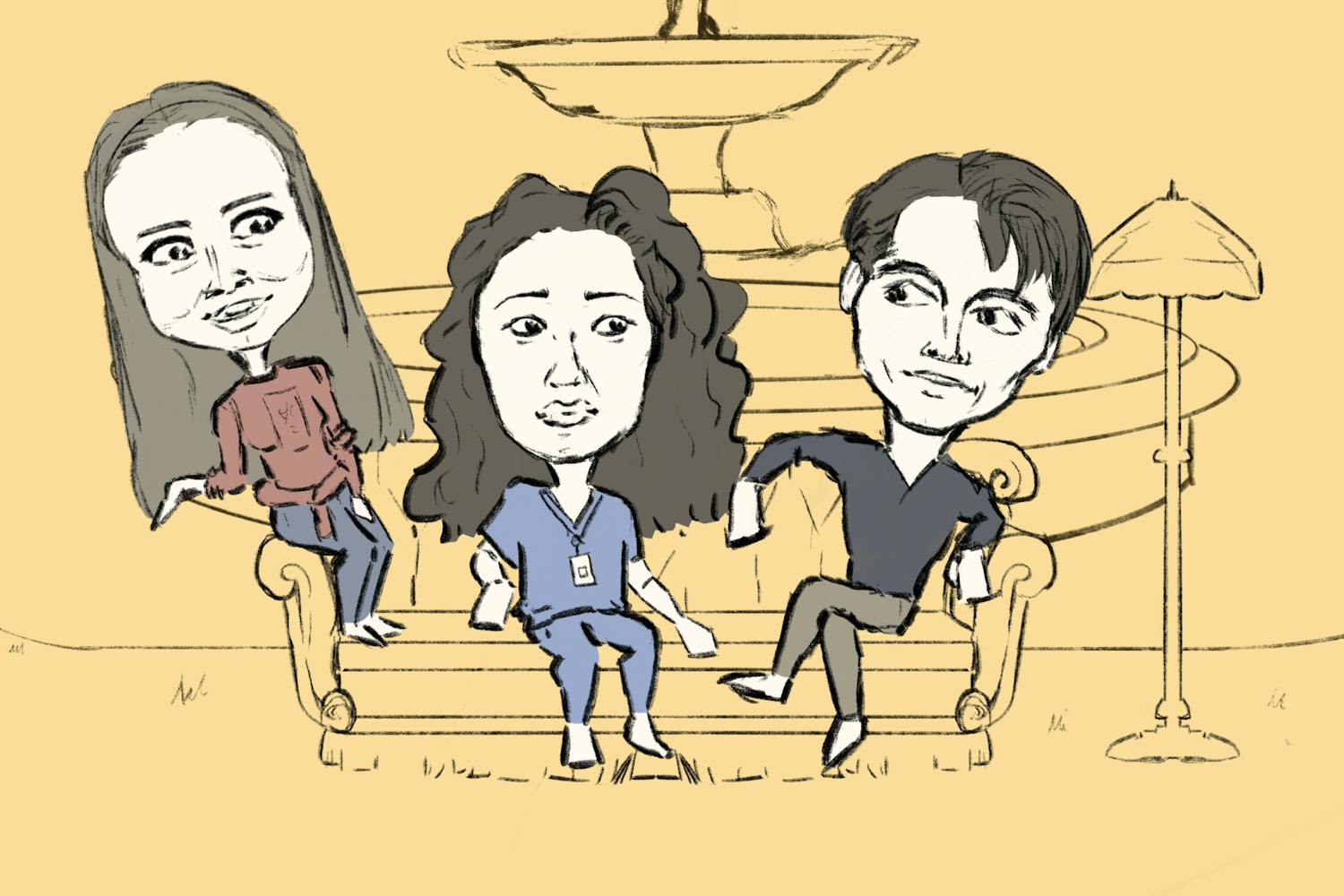Mike Flanagan's "The Haunting of Hill House" was widely appraised for its unique portrayal of familiar supernatural elements. The Netflix show, adapted from Shirley Jackson's 1959 novel of the same name, aired in October 2018 and swiftly engaged a large audience. But it received some criticism for the way it modified the original story.
In Jackson's book, four strangers, Eleanor, Dr. Montague, Theodora and Luke, come together to investigate a haunted house.
In the show, we meet a family of seven as they move into Hill House, nestled in the woods somewhere in Massachusetts. Olivia and Hugh Crain are in the business of flipping houses. In the summer of 1992, they start to renovate Hill House, and their five children roam freely about the house and its grounds, having various encounters with unknown forces.
While the eldest three, Steven, Shirley and Theodora, subconsciously feel a supernatural presence in the house, it is Luke and Nelly, the younger twins, who actually come face to face with some of the spirits. The "Tall Man" and the "Bent-Neck Lady" reappear in their adult lives on the eve of the climax of the show.
But the most unique trait of this show is how it takes the phrase "haunted house" literally. Instead of limiting itself to the concept of ghosts prowling about a house, it reveals the house itself has a soul. A malicious soul that feeds on the people living in the house so stealthily they don't realize it until years after they have left the house.
"The Haunting of Bly Manor," Flanagan's latest project, was released Oct. 9 on Netflix this year. It is largely considered to be a follow-up on "The Haunting of Hill House," but it has an entirely new setting and set of characters. Still, it retains the flavor of the previous show along with a few actors of the "Hill House" cast.
It is also the most recent adaptation of the 1898 novella "The Turn of the Screw" by Henry James. This horror novella is remembered for its ambiguous nature. The room for interpretation in this book has led to varying adaptations of it in film and television, for example, "The Innocents" (1961) and "The Turning" (2020).
While most of the central characters in "The Haunting of Bly Manor" echo those present in the original novella, some have been significantly altered. A few characters have also been added. Overall, the dramatis personae and their relationships have been tailored to be relevant to the present day.
The show begins very much like the book. Guests at a wedding gather around the fire after the rehearsal dinner and start talking about ghost stories.
Dani Clayton is an American who has recently moved to London to put a chapter of her life behind her. She meets the owner of Bly Manor, Henry Wingrave, on a job interview. The position is for an au pair to Henry's nephew and niece at Bly Manor.
Predictably, she gets the job and finds herself being driven to an unnamed place in the English countryside by Owen Sharma, cook at Bly Manor. On arrival, she meets Miles and Flora, who charm her instantly. We are also introduced to Hannah Grose, the housekeeper, and Jamie, the gardener.
The show took Mrs. Grose, a two-dimensional side character in "The Turn of the Screw," and gave her a really admirable twist. Owen and Jamie are new characters not present in the book, but they are integral to the plot and serve to underline the contrast between the daylight world of the living and the dark world of the spirits of Bly Manor.
The two evil spirits in the book, Peter Quint, former valet to Lord Henry, and Miss Jessel, Flora's old governess, lose some of their vagueness in "The Haunting of Bly Manor."
"The Turn of the Screw" merely hints at the nefarious intentions and propensities of Quint and Jessel. It does not paint a clear picture of what their crimes were when they were alive. From the scandalized tone in which Mrs. Grose speaks of them and their relationship, one is free to choose from an imaginative range of possibilities.
But the show gives more tangibility to these characters.
When Dani comes to Bly Manor, she finds that Quint was Henry's assistant before he siphoned money from Henry's bank account and is now presumably on the run. Dani's predecessor, Rebecca Jessel, apparently drowned herself in the lake. Peter and Rebecca's toxic, consuming relationship is also shown through flashbacks all along the show.
However, unlike Hill House, the inhabitants of Bly Manor are unrelated strangers brought together by work. Henry hardly ever leaves London, so the children are the only family in the vast mansion.
But Dani finds familial affection in the company of Hannah, Owen and Jamie — something Rebecca never fully felt because Peter's possessive love for her demanded her to be always slightly removed from everyone else.
While the grown Crain siblings are divergent as a result of their trauma from living in Hill House, the found family of Bly Manor holds each other close in the face of the unknown.
"The Haunting of Hill House" is unusual in the horror genre for its use of the time warp. Beside constantly flitting between time periods in the narrative, it also implies that some ghosts are just living people seen through tears in time.
This theory was changed slightly in "The Haunting of Bly Manor." There is no time warp in this story, only ghosts stuck in their memories, reliving the same moments, "dream-hopping," for all eternity.
The latest show surpasses the older one in its exploration of the history of the haunted mansion. The original spirits of Hill House, Hazel, Poppy and William Hill, hardly have any screen time on "The Haunting of Hill House".
In contrast, the Lady of the Lake in "The Haunting of Bly Manor" is an intricate character into whose life we get a comprehensive look.
The curse of Bly Manor is directly connected with her life and how it ended. The spirits at Bly are bound to the same fate as her as a result of this curse.
Reach the reporter at abhilasha.mandal@asu.edu and follow @AbhilashaMandal on Twitter.
Like State Press on Facebook and follow @statepress on Twitter.




